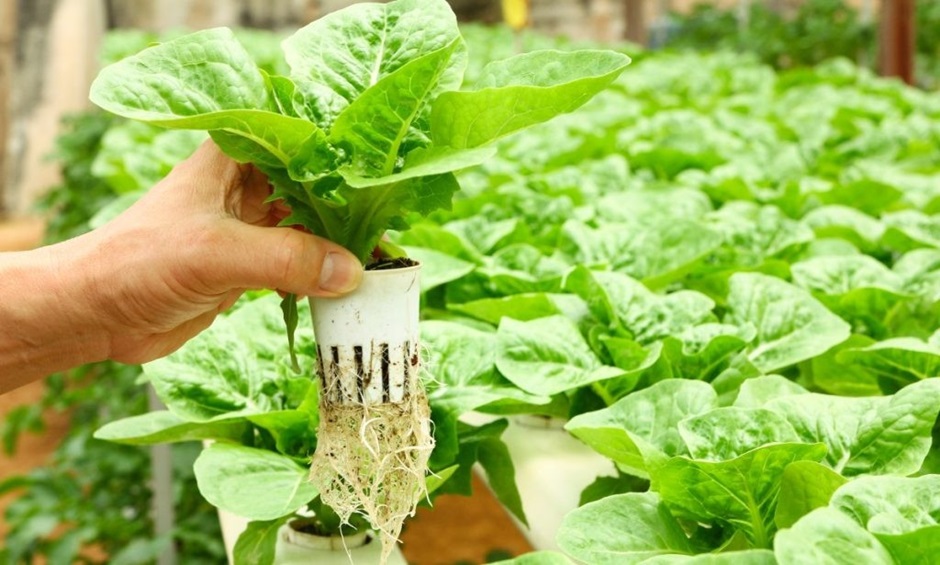Hydroponics are revolutionizing the way we think about agriculture. As the global population grows, traditional farming methods struggle to meet the increasing demand for food. This offers a sustainable and efficient alternative that could transform agricultural practices. Therefore, hydroponics could be the future of agriculture, and here is how.
The basics of hydroponics
Hydroponics involves growing plants using nutrient solutions in water. This method eliminates the need for soil, reducing the space required for cultivation. Plants grown hydroponically can be cultivated indoors, allowing for farming in places where conventional agriculture is not feasible.
There are several hydroponic methods, including nutrient film technique (NFT), deep water culture (DWC), and aeroponics. Each system has its advantages, appropriate for different types of crops and growing conditions. For example, NFT allows a continuous flow of nutrient solution over the roots, while aeroponics uses mist to deliver nutrients and uses less water.
Benefits of hydroponic farming
One of the primary benefits of a hydroponic system is its efficiency. Plants grow faster and produce more yield because they receive direct access to nutrients. This method also uses significantly less water than traditional farming, making it a sustainable option. Different hydroponic systems, like nutrient film technique (NFT) and deep water culture (DWC), serve various needs and optimize nutrient delivery.
Hydroponic farming is space-efficient. Vertical farming, a form of hydroponics, maximizes space by growing plants in stacked layers. This approach is ideal for urban areas where agricultural land is scarce. Also, the controlled environments in hydroponic systems mean crops can be grown in climates and regions where traditional agriculture would be impossible.
Reducing the use of pesticide
Pesticides are a major concern in traditional farming, posing health risks and environmental damage. On the other hand, hydroponics offers a pesticide-free alternative. In controlled environments, the risk of pests and diseases is significantly lower, reducing the need for chemical interventions. This is because hydroponic systems often use sterile and controlled environments for growing that prevent the growth of harmful organisms.
Cleaner farming practices result in safer food and a healthier environment. For instance, beneficial insects like bees and ladybugs are less likely to be harmed by pesticide use. Such focus on natural pest control methods helps maintain biodiversity and promotes a balanced agricultural environment.
A year-round crop production
Traditional farming is dependent on seasons, limiting crop production. Hydroponics, however, allows for year-round cultivation. Controlled environments provide the ideal conditions for plants to grow continuously. This means that crops can be produced consistently, regardless of external weather conditions.
This helps stabilize the food supply, reducing the risk of shortages and price fluctuations. Year-round production ensures that fresh produce is available at all times. For example, leafy greens and herbs can be harvested multiple times a year, providing a steady supply to markets and consumers. This type of production can significantly improve food availability and bring its affordable prices in various regions.
Environmental impact of hydroponics
Hydroponics has a lower environmental impact compared to traditional farming. Reduced water usage, minimal pesticide application, and efficient land use contribute to its sustainability. This method also prevents soil erosion and degradation, common issues in conventional agriculture.
For this reason, hydroponic systems present a more sustainable agricultural model. This is crucial for addressing the environmental challenges posed by traditional farming practices. Furthermore, the ability to grow food locally reduces the carbon footprint associated with long-distance transportation.
The economic viability of hydroponic farming
While the initial setup cost for hydroponic systems can be high, the long-term benefits are substantial. Higher yields, faster growth cycles, and reduced resource use result in lower operational costs. These factors contribute to the economic viability of hydroponic farming.
Moreover, urban hydroponic farms can meet local demand, reducing transportation costs and emissions. This local production model supports community economies and provides fresher, healthier food options. Additionally, hydroponic farms can diversify their product offerings, from leafy greens to fruits and herbs, catering to various market needs.
The bottom line
Hydroponics represents the future of sustainable agriculture. As technology advances, hydroponic systems become more efficient and accessible. The adaptability of hydroponics makes it suitable for various environments, from urban centers to dry regions. Its potential to produce high-quality, nutritious food with minimal resources positions hydroponics as a key player in future agricultural practices.

